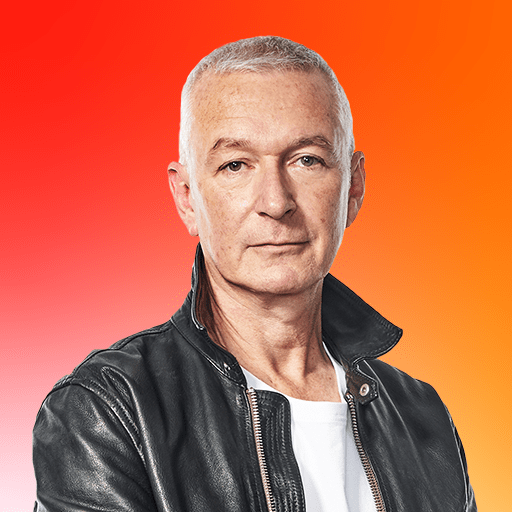Hydrocephalus: What every new parent needs to know
Hydrocephalus affects around 1 in every 770 babies.
Last updated 18th Oct 2022
It's a condition that occurs as commonly as Down's Syndrome, and it’s the leading cause of child brain surgery - so why is it that so many of us have never heard of hydrocephalus?
_Hydrocephalus, formerly known as 'water on the brain', is a build-up of cerebrospinal fluid inside the skull._
The excess fluid puts pressure on the brain, which can damage it, and, if left untreated, hydrocephalus can be fatal. An unusually large or rapidly growing skull could indicate a problem that needs further investigation by health professionals.
'GET-A-HEAD'
A charity called Harry's Hydrocephalus Awareness Trust (Harry's HAT) is now hoping to raise awareness of the life-long condition with a campaign they're calling 'Get-A-Head'. It focuses on why it's so important to measure and document a baby's head circumference during routine medical check-ups by GPs and health visitors, to help identify hydrocephalus at an early stage.
Caroline Coates co-founded Harry's HAT with her husband Matt in 2018 after the birth of their son Harry (pictured), who was diagnosed with hydrocephalus in utero. At the time, the family's world was turned upside down by a condition that neither of them had ever heard of.
The outcomes for children diagnosed with hydrocephalus can vary greatly depending on the specifics of each case, but for Harry; despite undergoing several brain surgeries in the first year of his life, he is now a very happy and energetic 4-year-old boy who has recently started mainstream school.
Harry’s dad said: “There’s no two ways about it, it’s been scary. Harry could go from being absolutely fine now, to 20 minutes later being rushed into hospital. It’s something we have to live with as the parents of a child with hydrocephalus. It’s not easy. If you were to see Harry running around and causing mayhem, you wouldn’t know there was anything wrong, but we live with the fear that tomorrow he could end up back in hospital having brain surgery again, and it could be three or four times on the trot because shunts block so often.”
Through the work of the Harry's HAT charity, Caroline and Matt have made it their mission to educate new and expectant parents on the signs and symptoms of hydrocephalus, to connect families who are going through the same thing, and to fund further research and training for midwives and neurosurgical nurses about the condition.
Matt said: "We've done some research with Bounty where 750 new parents took part in an online survey - and only 20% of them said they knew why their child needed to have their head measured. We also recently gave a talk at a midwifery conference where it became apparent that some of the student attendees didn’t know why head measurement is taken. They just thought it was another metric and didn't realise that it could potentially show a life-threatening condition. Everyone we spoke to agreed that there is need for greater training in this area. For us however, the key is parent education. If you know why your baby's head needs to be measured, you’ll push to make sure it happens, especially during routine appointments with GPs and health visitors."
While the symptoms of hydrocephalus can be managed with a device called a shunt, there is currently no cure for hydrocephalus. A shunt drains excess fluid from the ventricles of the brain and diverts it elsewhere in the body to be reabsorbed naturally, most often by the abdominal cavity, or sometimes by the atrium of the heart.
The failure rate of shunts is high, with around 50% needing replacement within the first two years of implantation. It creates a constant anxiety for patients and their families that further brain surgery could, in theory, happen at any time if a blockage or infection should occur.
What should parents be aware of?
Caroline has this advice for new parents to look out for: "If your baby is wearing 3-6 month clothing but the 3-6 month hat is way too small - that's something to look at. Also if a baby's body fits really well into a baby grow for their age but you can't get their head through the top - that also warrants further investigation. You're looking for a disparity between the size of the baby's head and the size of the baby's body. In most cases, it will be absolutely fine, but it's something you should bring to the attention of your health visitor or your GP.
"I had never heard of hydrocephalus before Harry, and he's my fourth child. It affects a lot of people and in my opinion it's something that people should be made aware of when they're expecting a child, and certainly when they're discharged from maternity units. They should be made aware of why measuring a baby's head circumference is important. It's not about measuring it all the time; we just want to make sure that it's being done at the routine health check-ups. Also, if there's concern around a baby's health or development, that would warrant a head measurement along with other checks."
Symptoms of Hydrocephalus in babies:
- Poor feeding
- Vomiting
- Sleepy (hard to wake up) or not as alert as usual
- Rapid head growth and/or an unusually large head (your GP or heath visitor can measure this)
- Bulging soft spot (fontanelle) on the top of the head
- Seeming irritable (cries easily or without reason)
- Seizures
- Very noticeable scalp veins
- “sunset” eyes, when the eyes appear to always be looking down and they are not able to lookup
- Slowed development or regression of skills
- Feeling the child is "just not quite right".
Emma Pilling has received support from Harry's HAT since her son Charlie was diagnosed with hydrocephalus. She noticed rapid changes to her baby's head very early in his life but had previously never been told about the symptoms to look out for: "His head was perfectly average at birth, but by six weeks old Charlie's head measurement was plotting above the 100th centile, and it just kept travelling. He was suddenly outgrowing his winter hats and we were almost chuckling to ourselves at the time thinking - gosh how big is his head getting?!"
Due to recognised failings by health professionals to diagnose Emma's son in a timely manner, Charlie now lives with an acquired brain injury and is mostly non-verbal. She told us how heart-breaking it is to know things could have been so different for her little boy: "When he was born, the midwife didn’t chart his head measurement. 12 days later when the health visitor came to see him at home, she didn't chart his head measurement, even though she had taken it. Basically, the curve that his head followed was like the trajectory of a rocket and then off the page. If there had been an understanding of the head measurement, it could have changed his life. But during the investigation into failings, the GP said he had never seen a case of hydrocephalus - so he didn’t know what he was looking for."
Emma now blogs about her family's experience with hydrocephalus to shine a light on the reality of living with the condition and to help other families.
Jenny Downs has also received support from Harry’s HAT since her son Jethro was diagnosed with hydrocephalus at 10 weeks old. She raised concerns about the size of Jethro’s head when he was 5 weeks old and waited a further 5 weeks for the condition to be confirmed by health professionals: "Without that head circumference measurement, I genuinely don't know where we would be. I don't know if we would still have him with us, or if he would have got to a point where he was so ill that he wouldn't have got better.
“I have friends who had babies at a similar time in different parts of the country, and they say that they don't measure heads where they are. If we lived somewhere where they didn't measure heads, what would have been? Things like this should be standardised, surely every child should be given the same opportunity, no matter where you live?"
Harry's HAT's Get-A-Head campaign aims to raise £50,000 to fund education for new and expectant parents on the reason for head circumference measurements, and to empower parents to ask for the measurement to be taken if they have concerns about the growth of their child's head. Research suggests early diagnosis can help to improve the outcome for a baby born with hydrocephalus.
You can read more about hydrocephalus and Harry’s HAT here.

